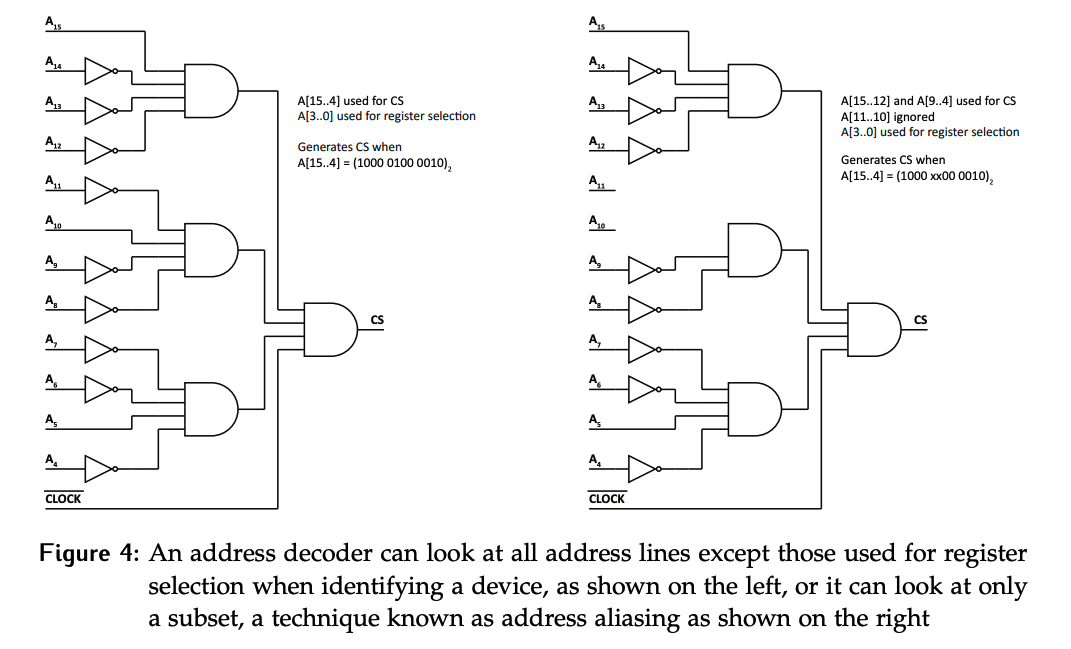In addition to address decoding, there is also a trade-off to be made, known as aliasing. If no aliasing is used, all address lines must be checked.
Address aliasing is an optimization technique that allows additional logic to be removed from the system by only requiring a subset of the address lines to actually be checked when determining the target peripheral.
In the example below, the full address of 0x842 is checked when no aliasing is used. If aliasing allowed bits 10 and 11 to be ignored while still uniquely selecting the correct device, those lines no longer need to be checked. The result is that four addresses will now result in the chip select being asserted: 0x842, as well as 0x802, 0x882, 0x8C2.
For this to work, the three additional addresses must not be used by another device in the system.

The number of aliases will be , where is the number of aliased addresses. Subtracting 1 accounts for the fact that one of the addresses is the actual assigned address.
Trade-Offs
A benefit of aliasing is a reduction in the required hardware, but it comes with the drawback that unused addresses could now select that device. Whether this is acceptable depends on the system.